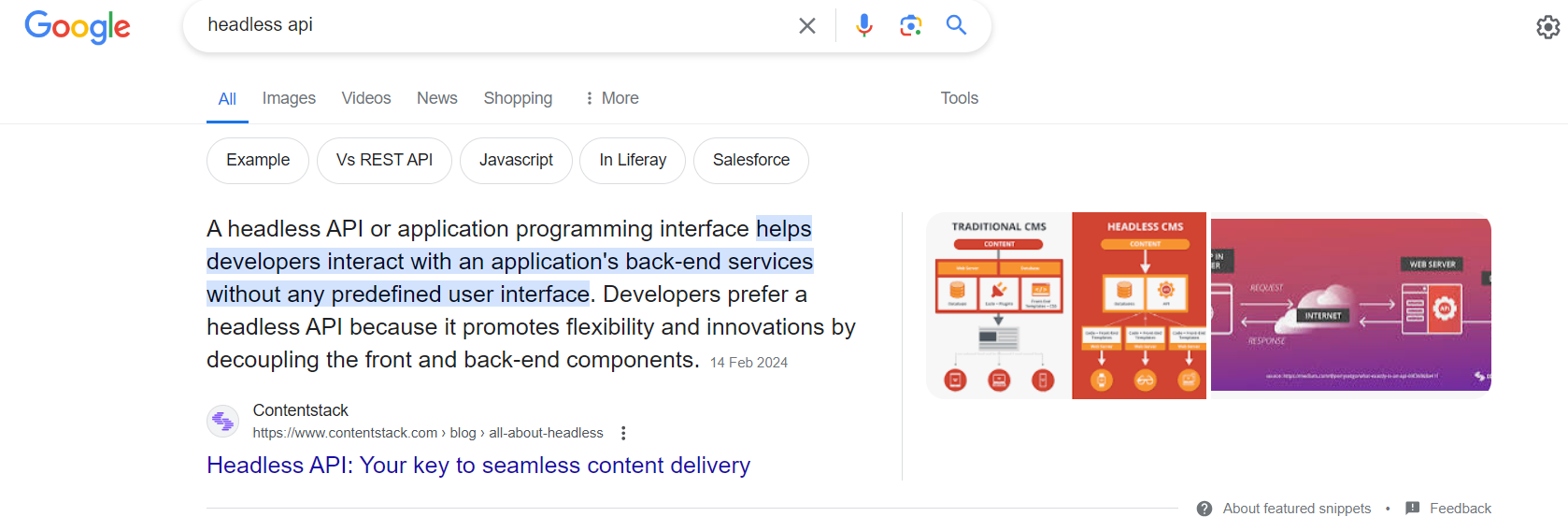SEO-rich text meaning: Key to higher Google rankings

Share

Discover the potential of SEO-rich text to increase your search rankings and user engagement. By understanding SEO-rich text meaning, you can use structured data and rich snippets to stand out. To increase your content strategy and implement SEO-rich text, talk to us today.
Highlights
You’ll learn about why you need SEO-rich text:
- Increases search rankings: SEO-rich text aligns with search algorithms, improving your site's visibility
- Improves user experience: Structured content with keywords, headers and multimedia increases readability, user engagement and user experience
- Stays competitive: Rich snippets set your content apart from others, increasing the clicks
- Adapts to trends: Use AI and algorithm changes to stay ahead
Understand the power of SEO-rich text and transform your digital presence today.
So, your content team has worked day in and night out to create compelling content that answers your customer's most pressing questions and portrays you as a leader in your niche. Yet search engines remain aloof and are not ready to give your content the attention it deserves.
You need something else to transform your content from “okay” to “magnificent” in Google's eyes. Enter search engine optimization (SEO) rich text.
SEO-rich text is your window to online visibility, especially with Google updating its search algorithm every other week. Today, it’s likely to become your best friend because it gives you the necessary visibility.
Before proceeding, let’s understand the meaning of SEO-rich text, its key components, benefits and strategies for implementing it.
What is SEO-rich text?
SEO-rich text refers to the content creation optimized for Google’s search engine. Creating content that aligns with the search engine algorithms makes it easier for search engines to rank your pages on top of the result pages. The rich text incorporates relevant keywords, additional information and phrases to increase the likelihood of getting discovered by your customers. Using headings, subheadings, bullet points and multimedia, SEO-rich text improves user experience and increases your chances of ranking higher in search results. Good SEO-rich content is critical for attracting organic traffic because it meets the needs of search engines and real people.
Some types of SEO-rich text or rich snippets are:
- Reviews and ratings
- FAQs
- Featured snippet
- Products
- Events
- Articles
Let’s say you want to rank on Google by showing user ratings. Incorporating review schema markup into your website lets you provide Google with detailed information about your product or service reviews. This structured data lets Google display rich snippets in search results, showcasing elements like star ratings, reviewer names and concise review summaries.
A rich snippet aims to provide informative, detailed and relevant content that search engines rank. Ranking as a featured snippet drives more targeted organic traffic and improves your click-through rate. You can implement SEO-rich text using schema.org vocabulary and embed it into web pages using formats like Schema Microdata, JSON-LD and RDFa.

Modernize your digital presence with Contentstack. Learn from the success stories of Icelandair and Pella. Improve your site performance, publishing efficiency, and speed, just as they did. Start your journey towards a modern digital experience. Start your free trial with Contentstack today and witness an ROI of up to 295%.
Key components of SEO-rich text
Keyword research
Using Google Keyword Planner or SEMrush, identify keywords with high search volume. Ideally, such keywords should be integrated into your content to rank on search engines.
Meta tags
Crafting optimized metadata, meta titles and descriptions gives search engines a glimpse into your content while influencing click-through rates. Keep them concise and compelling, with primary keywords to attract users.
Header Tags (H1, H2, H3)
Structuring your content with a header improves content readability and SEO. The H1 highlights the main keyword and topic, while the H2 and H3 tags break down content, enhancing user experience and search engine readability.
Structured Data
Structured data organizes information in a standard format. This makes it easier for search engines to understand your content, leading to rich snippets in the search results.
Internal and external links
Linking to other relevant pages on your site and reputable external sources builds credibility and provides a richer context. This helps users navigate and signals search engines about the connections within your content.
Multimedia elements
Adding images, videos and infographics improves the user experience. Optimize these elements with relevant alt text and descriptive file names to support your SEO efforts.
Benefits of SEO-rich text
Improves search engine rankings
Companies value SEO-rich text because it improves search engine rankings and organic traffic.
Meta tags, keyword inclusion and backlinks enhance website authority and relevance in search results. Rich snippets and structured data differentiate your content from others on SERPs. This differentiation draws more clicks and engagement, which signals search engines the quality and relevance of your site.
Case study: How did Contentstack improve Reckitt search engine rankings and traffic?
Reckitt wanted to unify its content across 700 websites for 84 brands in the health, nutrition, and hygiene markets using Contentstack’s headless CMS. This move streamlined internal processes, improved digital experiences and increased website performance scores by 40%. The shift to a headless CMS reduced costs and expedited website delivery and brand identity. With Contentstack, Reckitt improved flexibility, scalability and performance. The company witnessed reduced delivery times, lower maintenance costs and enhanced SEO performance. Using Contentstack, Reckitt continues to optimize its content for SEO and create SEO-rich text.
After using Contentstack, Paweł Płoneczka, IT&D Senior Manager Websites at Reckittm said:
“With Contentstack’s global governance and control over the content model, we can make sure that all sites are compliant, have full accessibility and work as they should, out-of-the-box.”
Read the case study here.
Increases user experience
Don’t confuse SEO-rich content with keyword stuffing. Aside from strategically including keywords, creating valuable, user-friendly content that fulfills your customer requirements is essential. Before publishing your content, check its readability, clarity and engagement to encourage repeat purchases.
Boosts click-through rate
Crafting engaging meta descriptions and rich snippets enhances your click-through rates. Only when your search results stand out do you witness an increase in click-through rate. When people read something, they're more likely to click and explore further. So, put extra effort into those meta descriptions to witness a positive change in your organic visibility.
Enhances conversion rates
Organic traffic comprises prospects who are actively searching for products or services. SEO-rich text increases conversion rates by making the user experience more engaging and persuasive. When you place visible and relevant calls-to-action (CTAs), it guides your users to buy your products. The SEO-rich text brings more visitors by improving visibility. It also meets their needs, building trust and credibility. When your content is timely and informative, then your customers will subscribe to a newsletter, request a quote or make a purchase. If you want to enhance the effectiveness of SEO, develop content that convinces users and establishes loyalty.
Gives you a competitive edge
SEO is highly competitive because it helps you rank for a keyword. But a rich snippet gives you a competitive edge. How? Not all your competitors use SEO-rich text, helping you leverage the gap. Furthermore, high-quality, informative content establishes your authority in your niche, building trust with your audience. Users who perceive your brand as a reliable source engage with your products or services, leading to higher conversion rates.
The role of SEO-rich text in search ranking
SEO-rich text improves your search rankings. Why? Search engines like Google prefer user-friendly, relevant and well-organized content. Structured data and rich snippets show crawlers that your content answers a particular search query. So, you attract more clicks and engagement.
Incorporating keywords within a well-organized structure, like headers and bullet points, makes your content more accessible to users and search engines. This clear layout ensures your pages are indexed, increasing your rankings. The combined benefits of better visibility, improved user experience and relevance push your content higher in search results. That's why having SEO-rich text is important for every business.
Discover the future of content experience with Contentstack: Pioneering the integration of ChatGPT with Digital Assistant, Contentstack stands out in the Aragon Research Globe™ award. Our low-code approach and product innovations set us apart. Join our group demo to experience a future-leading content experience platform.
The future of SEO-rich text
As Google and other search engines evolve, rich snippets will become more important. Here’s what the future holds for SEO-rich snippets:
Adapting to changing SERP features
Search engines constantly update their features to improve the Search Engine Results Page (SERP). They introduce new tools and formats that offer fresh visibility to every search query. This includes featured snippets, local packs and knowledge graphs, all of which impact click-through rates and user engagement.
Keeping up with Google algorithm changes
Regular updates to Google's algorithms affect your website's rankings and visibility. It's crucial to stay informed about these changes by following reliable SEO news sources and industry experts. You can adjust your strategies to keep your content relevant and competitive by comprehending how these updates influence your user’s search behavior.
AI and machine learning's role in SEO
Artificial intelligence and machine learning allow content analysis, helping search engines understand context and search intent. Optimizing for search now means improving high-quality content that meets user needs alongside using tools that analyze data and predict trends.
FAQs
What is a rich text for SEO?
Rich text for SEO consists of structured data markup, rich snippets and relevant keywords. These elements improve your website’s visibility and user engagement.
What are SEO-rich results?
SEO-rich results have better search listings, which offer information like images, ratings or reviews, making these results visually appealing and informative.
What is the meaning of rich text?
Rich text adds content and formatting elements, making your content more presentable. Unlike plain text, which includes characters without any formatting, rich text includes images, links, colors, fonts and styles like bold or italics.
What is Google rich text?
Google rich text is optimized content that appears in Google's rich results, which include featured snippets and star ratings.
Learn more
Today, when businesses are fighting over every keyword and looking to rank higher on search engine results pages (SERPs), SEO-rich text is essential for marketing success. When you embrace and implement structured data, you set yourself up for success. Rich snippet not only makes your content visually appealing but also drive more qualified visitors to your website.
If you want users to start seeing relevant details about your business, it’s time to dive into the world of rich snippets and structured data. To know how Contentstack can help you with SEO-rich text, talk to us today.



